‘Kona’ by Ronkonkoma artist Gabriella Grama
See more of the artist’s work at womensharingart.org.
Reviewed by John L. Turner
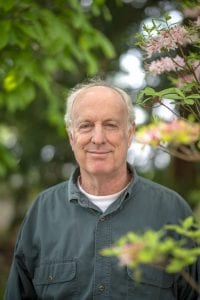
Authors have differing goals for writing. For some, the motivation is to entertain, for other’s it’s to illuminate some slice of life, and for others still it’s to explore some fascinating historical event. In rare cases, though, the author writes with the not-so-modest goal of changing the world by presenting a new and novel way of looking at things, the result being a change to a person’s perspective on an issue, concept or their set of values.
Changing the world, or at least a part of it, by shifting our collective mindset is Doug Tallamy’s goal in his highly insightful book Nature’s Best Hope. The target of this change? The front and backyards of suburbia, dominated as they are by grass lawns and non-native shrubs. As Tallamy makes clear our yards are a virtual dead zone, biologically speaking, requiring vast amounts of water and chemicals and which provides little to no food or shelter for wildlife, large and small.
In its place, Tallamy sees a suburbia vibrantly alive with wildlife — butterflies and moths, pollinating bees, and abundant birds — all sustained by widespread plantings of native, life-sustaining plant species — white oaks, willows, and black cherry trees; elderberry, arrowwood and spicebush shrubs interspersed among beds of wildflowers including goldenrods (not the producers of hay fever!), asters, evening primrose, blazing stars, and milkweeds. He sees residential landscape design incorporating new values beyond just aesthetics to include the needs of the local ecology by providing species that help maintain, and to a large degree enhance, local food webs.
What does he call this interconnected webs of land with interconnected native plant and animal species flourishing within? Homegrown National Park, a place every bit as diverse as any national park existing today and “Nature’s Best Hope” for restoring highly important ecological relationships.

As Tallamy makes clear, the spread of “sterile suburbia,” dominated by turf grass and exotic trees, shrubs, and wildflowers, is not a small problem. Collectively, lawns take up approximately forty million acres of land in the United States, equivalent to the combined size of the states of New York and Massachusetts. And it is growing daily.
And as Tallamy further makes clear, this growth has come at a high ecological cost. Forests and fields, filled with native plants that sustain caterpillars, bumblebees, squirrels, and Scarlet Tanagers, are replaced with exotic and sterile plants — Callery Pears, Arborvitae, hostas, and English Ivy, to name but a few. These plants and other exotics are fed upon by very few species, causing food webs to fall apart, a trend that portends an ominous future.
Here’s but one example — butterfly and moth caterpillars are the major source of food that songbirds feed their young — and oak species sustain 557 caterpillar species! If there are oaks, and other native trees, then the local food web is intact; remove and replace them and other native plants with non-natives and it unravels — insects decline followed by birds and mammals.
And this unraveling, happening quietly before our eyes, means that Tallamy’s idea isn’t just an interesting one — it is vital to our survival! Birds are not the only group of animals dependent on insects for their survival — we humans depend upon insects too. If we were to do away with all insects, human society would soon collapse and humanity would simply not survive long-term for there would be no replacement agent to pollinate the nearly 90% of all plants that they currently depend upon insects for.
Many insects are in trouble, a trend which scientists have labeled the “insect apocalypse.” Several North American bumblebees have already gone extinct and 25% of our other native bumblebees risk extinction. Many other of the continent’s 4,000 bee species are in trouble too, not to mention countless moths, butterflies, and beetles. Even the workhorse European honey bee is in trouble.
Tallamy is a fine writer with an interesting and clear style and he presents subjects and concepts in logical sequence. Color photographs of numerous plants and butterflies (and their famous larvae-caterpillars) fill the book and there’s an informative question and answer section in the back of the book. Also, an extensive bibliography is available if the reader is interested in digging deeper into some concept covered in the book.
And the most important chapter in the book? Chapter 11, entitled “What Each of Us Can Do.” The chapter includes a bunch of common sense ideas: shrink the size of your lawn; remove invasive species; plant native plants that are ecologically important like the aforementioned oaks and goldenrods and be generous with these plantings; talk to, and team up, with your neighbor to coordinate plantings; install bee hotels; place covers over sunken window wells that can serve as death traps for small mammals and amphibians; use motion-sensing security lights that only go on when needed (security lights that stay on all the time can kill hundreds if not thousands of moths attracted to the light); and do not spray or fertilize — native plants don’t need it.
Each of us can do some or all of these things. If we do any of them, we are helping to expand Homegrown National Park!
Released in February through Timber Press, Nature’s Best Hope is available online at www.timberpress.com, www.amazon.com and www.barnesandnoble.com. For more information on the author, visit www.bringingnaturehome.net.
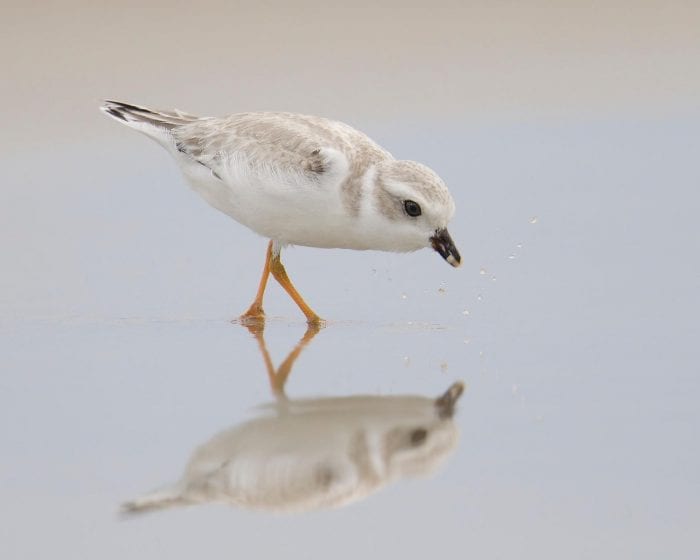
By Brooke Bateman
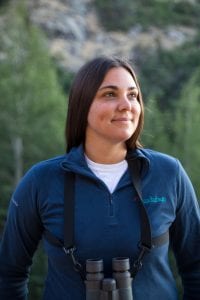
Fifty years ago on April 22nd, millions of Americans made their voices heard. It was this first Earth Day that brought on the environmental movement as we know it today, where concerned individuals collectively said that it was time to take action to be better for our planet.
Across the country, people demanded that action be taken to clean up our air and water and protect our environment. The momentum of that day helped bring about public support in the creation of the Environmental Protection Agency, and helped usher through the passage of key laws including the Clean Water Act, Clean Air Act, and the Endangered Species Act.
As Earth Day 2020 is set to be celebrated in nearly 200 countries, this year’s celebration may look different to the crowd-filled events and rallies typical of this day; we are in truly unprecedented times. As I write this we are a few weeks into the pandemic quarantine, but I am blessed to be outside listening to the familiar calls of the birds I have come to know in my neighborhood.
That’s the thing about birds; their presence can connect us to the local rhythms of nature, the signature of a time and place. As the majority of people are spending their days at home on lockdown, I have had many friends reach out to me about how much solace they are finding in birds right now. As one of the most beloved and ubiquitous forms of wildlife, birds are our connector to nature around us. Birds are also our messengers and if we pay attention, they’re showing us that our world is changing.
Over the last 50 years, America has lost over one quarter of its birds, nearly 3 billion birds less fill our skies today then in 1970. Yet, the century-old Migratory Bird Treaty Act (MBTA) is being dismantled, making it much more likely that even more will be lost and without any accountability for incidental loss.
We are losing nature at an unprecedented rate, yet we are seeing rollbacks on some of our bedrock protections such as the Clean Air and Water Acts, making it easier for our planet to be polluted yet again. Looking forward to the next 50 years, climate change is the biggest issue both birds and people alike will face. Birds are already telling us that our climate is changing — birds ranges are changing, shifting and contracting as the climate conditions change across the globe. Birds like the Rusty Blackbird are lost to large parts of their historical range as climate conditions worsen. Whole communities are collapsing, with mass seabird die offs now happening yearly off our northern shores due to warming sea temperatures. Seabirds like puffins and murres are dying from starvation from the changes in the food web brought about by extreme heat in the oceans.
Bird migration has shifted. As spring arrives earlier and earlier, birds are either having to migrate earlier or find themselves out of luck when they arrive too late and their resources have past their peak. Even the herald of spring, the American Robin, has decided that it may not have to fly south after all, sticking around through warmer winters in many places.
Without global action, such as the Paris accord (of which the U.S. is no longer a part of), how can we meet the significant actions needed to limit global temperatures to 2C (or preferably 1.5C)? The consequence of not doing so is that our planet would be transformed into a more inhospitable place.
The consequence is potentially losing billions more birds. Audubon’s Survival by Degrees: 389 Bird Species on the Brink, a report forecasting the survival of birds to climate change, shows that two-thirds of North American bird species are at risk of extreme range loss and potentially extinction from unmitigated climate change. In New York, 116 species are vulnerable to climate change, including charismatic species like the Scarlet Tanager, Wood Thrush, American Woodcock, Saltmarsh Sparrow, and Piping Plover.
The Piping Plover could be completely lost from the shores of Long Island due to climate change. No species will escape climate change, with birds (and the places they share with us) also facing multiple coincident climate change-related threats. New York will experience greater extreme heat events, increased coastal and inland flooding from sea level rise and heavy rainfall, increased pressures from urbanization, and disrupted ecosystems.
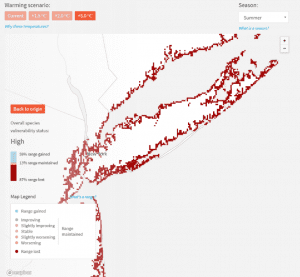 But this loss is so much more than just numbers. It is the loss of some of our familiar neighborhood birds we have come to know and love, of nature and our sense of place as we know it. It is not being able to share the joy of seeing a Piping Plover on our beaches with our children. It is the loss of our familiar seasons and weather patterns, where extreme events and natural disasters become more frequent. It’s some of our more vulnerable communities being put at further risk, as climate change will disproportionately affect our children, our elderly, lower income communities, and communities of color.
But this loss is so much more than just numbers. It is the loss of some of our familiar neighborhood birds we have come to know and love, of nature and our sense of place as we know it. It is not being able to share the joy of seeing a Piping Plover on our beaches with our children. It is the loss of our familiar seasons and weather patterns, where extreme events and natural disasters become more frequent. It’s some of our more vulnerable communities being put at further risk, as climate change will disproportionately affect our children, our elderly, lower income communities, and communities of color.
However, we still have time, and as the threat of climate change grows, so does the work we need to do. If we can limit climate change to between 1.5C to 2.0C, then we can limit the loss we will come to see. Indeed, 76% of bird species will be better off if we can do just that, and our communities and environment will also not see such drastic affects.
To get there we need to listen to the science, and make changes now both as individuals and as a nation. We have done this before. One of the greatest environmental successes of our time came as concerned Americans listened to what the birds were telling us. Toxic pesticides, pollution and ecosystem destruction were devastating some of our beloved birds including the Bald Eagle and the Brown Pelican. We gathered evidence, and looked hard at our values.
As Americans, we decided that we value clean water, clean air, and healthy ecosystems for our wildlife and natural spaces. We decided we did not want a world where unchecked environmental destruction quieted our birds as described in Rachel Carson’s Silent Spring. We listened to the science and we took action, and as the environment got healthier, the birds returned. I now marvel at the Bald Eagles and Osprey that have returned to Long Island, having never been a feature of my Long Island childhood.
So where do we stand on this 50th Earth Day? We need to yet again examine our values and embrace science-based conservation. We need to take action, to set in motion the momentum to spark the next environmental movement taking us beyond just one day. We need to face these incredible challenges and opportunities collectively, to do what needs to be done to solve this climate crisis.
The science illustrates how our warming planet will impact both the birds we all love, and the people in our communities, but also shows us that if we act there is still time to create a brighter future for birds and people. If we do something now to stabilize climate change, then we can improve the chances for the majority of these species. And we already have a lot of the tools we need to reduce the effects of global warming.
Climate change is a global crisis, a threat that humanity faces as a whole. Even as we face the current global pandemic threat, the need for effective and coordinated advocacy for climate change action is greater than ever. We have shown through our current pandemic crisis we are able to come together (even by being apart), and we must harness this united energy as the climate is changing and the window to act is closing. Birds are telling us, the time to act on climate change is now.
This Earth Day, and every day, we need to come together and listen and to act on our values. We once again need to be a collective voice of change to protect the earth we all share.
Brooke Bateman is a mother, nature lover, and scientist. She received her PhD in Ecology and Conservation and is the Senior Scientist, Climate at the National Audubon Society. The Stony Brook resident also sits on the board of Four Harbors Audubon Society.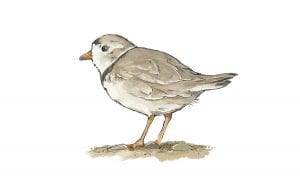
By Carl Safina
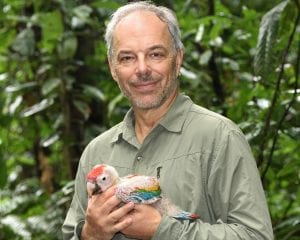
When I was 15 or so, an older neighbor took me fishing to his secret pond in Flanders. It was 1970, the year of the first Earth Day. He led me along a narrow trail through the pine woods to his special spot. It was a modest-sized pond, and the first thing I noticed was that right across the shore was a huge nest made of big sticks. It was a little dilapidated. Abandoned.
I’d always loved birds. And among birds, I particularly was thrilled by hawks, eagles, and falcons. But living in a cookie-cut suburb of central Nassau County, my real-world contact with wild nature at that time was very limited. Much of what I knew was from books. I knew what that nest was. And I knew why it was abandoned.
It belonged to a spectacular species I’d never seen: huge fish hawks called ospreys. And I knew, also — from reading Newsday and Rachel Carson’s Silent Spring — that I would probably never see them because DDT and other hard pesticides had caused all their eggs to break. Adults were now dying off wholesale due to old age, and ospreys were already erased from most of the region.
I knew all this from reading, but actually seeing that nest made me realize in a very visceral way how narrowly I’d missed growing up in a world that contained what it was supposed to contain. I could not believe the bad luck of the timing of my life.
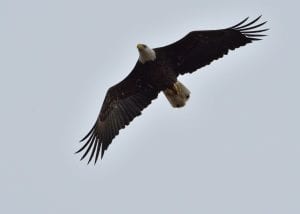
And speaking of bad timing; that same year The New York Times Magazine ran a story on my favorite bird — another that I had only read about and seen photos of. The title of the story: Death Comes To The Peregrine Falcon. I would never see my favorite bird, because the same pesticides that were snuffing out ospreys had also wiped peregrine falcons from their cliff-nests from the New England to the West Coast and indeed all across Europe.
Bald eagles — forget it. A few left in places like southern Florida and Alaska, places I was sure I would never get to.
I assumed the trends would continue. I did not yet know that a small group of people based in a place called East Setauket were about to sue for the cessation of aerial spraying of DDT and some other chlorinated hydrocarbon pesticides. But they did. More surprising — they won!
In a few years, with those pesticides banned, the new Endangered Species Act in place, and the Clean Air Act, Clean Water Act, and National Environmental Policy Act signed into law by a president named Nixon, the natural environment became noticeably cleaner.
Scientists at Cornell University had succeeded in breeding some of the last peregrine falcons in the U.S. — hatchlings collected in Arctic Alaska. So in 1976, I drove up to Ithaca, tucked my long hair under my collar, and entered the office of the breeding facility to make the strongest case I could muster for why I would be a good candidate for helping to release the first generation of captive-bred peregrine falcons into a world newly cleansed of the worst pesticides of the time.
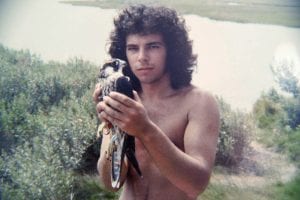
And thus I started my professional career by securing the first of several dream jobs, spending part of the summer caring for and managing the release of three precious falcon chicks that were not just birds; they were three promises we were making to ourselves and to the future of Life on Earth. If it was going to be up to us — and it was, of course — this wondrous species, the fastest living thing in the world, would not vanish from this planet.
That was also the year that I saw an osprey in Cold Spring Harbor.
Other Cornell scientists, who refused to see our ospreys wither into oblivion, moved viable eggs from remaining Chesapeake pairs to failing Long Island nests, keeping a few remnant pairs on reproductive life-support so that a smattering of new young birds might survive and return to the region.
It all started working. Ospreys did start coming back, laying eggs that no longer broke. Slowly at first and then to a degree I never could have imagined, ospreys recovered and came off the Endangered Species list. New York City now hosts the densest known nesting population of peregrine falcons in the world, sited on bridges and tall buildings, back in the Hudson’s Palisades, and even, locally, around Port Jefferson Harbor.
Bald eagles are nesting on Long Island for the first time in our lives, with perhaps a dozen pairs now, and regular sightings in our Setauket and Stony Brook communities. All of that we owe to the few, early, never-say-die scientists and environmentalists of the first Earth Day era.
When the continued existence of several species of whales was very much in doubt, people who are now friends and colleagues of mine worked tireless, hard-fought battles that achieved, in 1986, a global ban on most commercial whale hunting. Another of my friends was burned in effigy for her tireless work to secure regulations that would prevent the last sea turtles on the East Coast from drowning in shrimp nets.
But whales are now so common in our waters that it is no longer exceptional to see them from our ocean beaches. Sea turtle numbers have sky-rocketed from 1980s lows. Since the 1990s I’ve worked on several key campaigns to turn around the deep depletions in our fish populations and some of these, too, have worked beyond our — and our opponents’ — expectations.
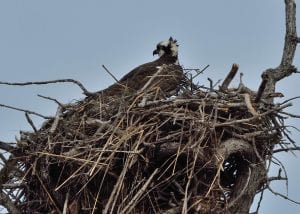
Last summer, a friend told me of seeing several whales from the beach in East Hampton. He said they were feeding just beyond the surf on dense schools of herring-like fish called menhaden. Because they formerly existed in enormous schools, are very energy and nutrient rich, and are eaten by many kinds of fish, seabirds, and marine mammals, menhaden have been called “the most important fish in the sea.” And because of recent hard-won catch restrictions, they’ve been rapidly recovering.
The morning after I got my friend’s tip, I checked five beaches from Amagansett to the west side of East Hampton. To my astonishment, I saw whales, dolphins, and dense schools of menhaden at every stop. The next morning I took my boat around Montauk Point for a water view. I first encountered the menhaden schools just west of the Point. Millions of fish extended in an unbroken school twenty miles long, with a humpback whale or two lunging spectacularly into breakfast every mile and a half or so. I went as far west as Amagansett, traveling just beyond the surf. I took a bunch of photos and decided to head back, knowing that the fruits of these spectacular recoveries continued far down the beach.
Nature is under withering pressure worldwide. But we here on Long Island are beneficiaries of some of the best successes I know about. And the successes are both spectacular and instructive.
When we give natural communities and endangered species a break, and make the slightest accommodation to coexist and let life live, they strive to recover the abundance, vitality, and beauty of the original world. Two things are required: we have to want it, and a few people have to move a few obstacles and let it happen. And then we can have, and pass along, a more alive, more beautiful world. It can work.
Carl Safina is an ecologist and a MacArthur Fellow. He holds the Endowed Chair for Nature and Humanity at Stony Brook University and is founder of the not-for-profit Safina Center. He is author of numerous books on the human relationship with the rest of the living world. Carl’s new book is “Becoming Wild; How Animal Cultures Raise Families, Create Beauty, and Achieve Peace.” More at CarlSafina.org and SafinaCenter.org
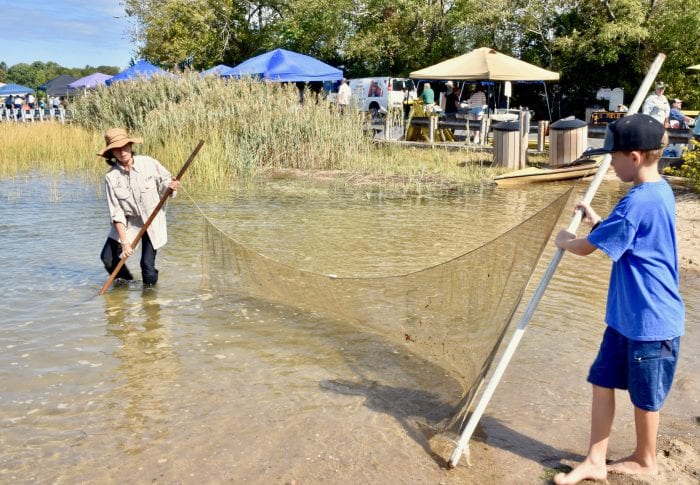
By Patricia Paladines
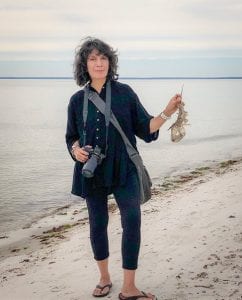
The first Earth Day on April 22, 1970 catalyzed the modern environmental education movement. A few months after that first official celebration of the Earth’s natural environment, the Congress of the United States passed The Environmental Education Act, which was signed into law by President Richard Nixon on October 30, 1970. Later, Nixon noted that it is “vital that our entire society develop a new understanding and new awareness of man’s relation to his environment – what might be called ‘environmental literacy.’”
The Act states that “The Congress of the United States finds that the deterioration of the quality of the Nation’s environment and of its ecological balance poses a serious threat to the strength and vitality of the people of the Nation and is in part due to poor understanding of the Nation’s environment and of the need for ecological balance; that presently there do not exist adequate resources for educating and informing citizens in these areas, and that concerted efforts in educating citizens about environmental quality and ecological balance are therefore necessary.”
The Environmental Education Act encouraged and provided financial support for the development of curricula that improved American’s understanding of policies that enhance environmental quality and maintain ecological balance. It called for the use of such curricula in model educational programs at the elementary and secondary school levels, the development of training programs for teachers, other educational personnel, public service personnel, community, labor, industrial and business leaders, and government employees at State, Federal and local levels.
It supported the planning of outdoor ecological centers that would provide community education programs on preserving and enhancing environmental quality and maintaining ecological balance, and the preparation and distribution of material by mass media in dealing with the environment and ecology.
In 1971, the U.S. Commissioner of Education, Sidney P. Marland Jr. wrote an article titled Environmental Education Cannot Wait in American Education. In the article he stated, “Environment as a high priority educational theme has also been assisted by strong student concern for the decline in environmental quality. Youth is more concerned with the future state of the environment than is the older generation because young people are, for one thing, going to spend so much time inhaling that future environment, swallowing it, and finding their way through it. Environmental concern offers an attractive neutral ground in which to work out the ‘alliance between generations’ which President Nixon spoke of at the University of Nebraska in January.”
Many of us were the “youth” Mr. Marland refers to in his article. We grew up inhaling, swallowing and finding our way through the environment our leaders at the time sought to protect. We raised our children on a less polluted planet than what we had begun to experience in the 1950s and 60s when we were children.
Opportunities for learning about the natural environment that surrounds us are readily available around Long Island through nature centers, aquariums, universities, and our protected forests and beaches.
On this 50th anniversary of the first Earth Day, the world is on lockdown due to a pandemic which is believed to have originated from disturbance to wildlife and habitats. It is an opportunity to give us pause and reflect on how we now should work out an “alliance between generations” for preventing future Earth Days experienced in lockdowns caused by environmental illiteracy.
Patricia Paladines is an environmental educator and photographer living Setauket. She works as a consultant for an organization that funds UNICEF’s Let Us Learn projects in Afghanistan, Bangladesh, Liberia, Madagascar and Nepal. Patricia is on the board of various local environmental organizations including the Four Harbors Audubon Society and the Center for Environmental Education and Discovery in Brookhaven, and in the warm months enjoys leading trips around Stony Brook’s West Meadow Creek aboard the Ward Melville Heritage Organization’s Discovery tour boat.
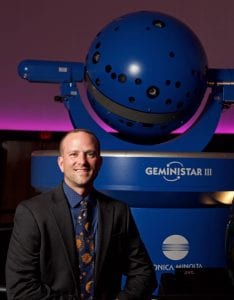
The Reichert Planetarium at the Suffolk County Vanderbilt Museum in Centerport is closed for now, but its astronomy educators, artists, and show producers are busy creating new programs to make it easy for parents and children to enjoy its offerings — at home.
“We are producing an array of virtual planetarium programs that we will begin posting on a YouTube channel called Reichert Planetarium’s Virtual Outreach. The first episode, titled How to Use a Telescope, is now live,” said director Dave Bush.
“Other projects will include a comic strip based on Konnie – our affectionately named planetarium star projector; a coloring book; crafts and projects targeted to family groups for home use; and educational materials for teachers to download and use with their at-home students,” he said.
Some programs will be posted on the museum’s website and on social media.
The planetarium’s Konica Minolta star projector was the inspiration for a character called “Konnie” to be featured in a comic strip that presents astronomy information in an entertaining way.
“Konnie will become a comic strip and we’re considering turning the strips into coloring books,” said Bush.
When the planetarium reopens, visitors will see several fresh, original programs. Bush and his staff have created new program scripts for staff who operate the projector and star-ball systems through the command console in the rear of the planetarium’s William and Mollie Rogers Theater. The programs explore stars visible during the different seasons, and feature trips to the planets.
“The programs cover a wide range of subjects,” Bush explained, “including tours of habitable worlds, the history of space exploration, the solar system, the life cycle of stars, how far Earth is from the stars, and how astronomers measure that distance. Console operators are developing their own 20- and 45-minute star talks, with their personal choice of music, narration, imagery, and humor.”
Bush plans to produce virtual planetarium shows using the popular conferencing app Zoom. He is creating the shows remotely, away from the planetarium, using professional recording equipment and video-editing software.
The Reichert Planetarium staff is creating downloadable worksheets for children. “Our challenge is, what do we add to make sure kids stay interested and engaged?” Bush said. “We want to make pages that make sense visually, with fun information, games and characters.”
The team is also developing new mythology shows for both recorded and live presentations. The shows will be a series of short constellation stories from ancient civilizations around the world.
“We have talented artists on staff who can create the characters, scenery and panoramas that will be displayed on the domed projection screen of the planetarium,” Bush said. “We’ve tossed around the idea of turning Konnie into a time machine. We can imagine traveling through time in an imaginary spaceship. We can be magically transported to lands in ancient places like Greece, Rome and Stonehenge, as well as to original, imaginary landscapes. Whatever we want!”
While Bush and his colleagues produce new programs, they are also “touching up” existing educational programs for school groups. “Now we have the time to focus on what we need to do to enhance programming,” he said.
For more information, visit www.vanderbiltmuseum.org and select Virtual Learning.
National Geographic commemorates Earth Day with a special screening of the new two-hour documentary Jane Goodall: The Hope on April 22 starting at 9 p.m. The film, which will air globally in 172 countries and 43 languages on National Geographic, Nat Geo WILD and Nat Geo MUNDO channels, takes viewers through chapters of Dr. Goodall’s journey, highlighting how she inspires hope for our planet, love for its animal inhabitants and actions of stewardship for this generation and those to come.
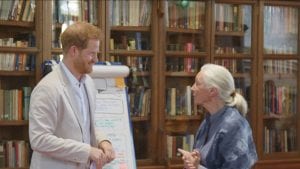
Featuring an extensive collection of photographs and footage that spans over seven decades, the special depicts the formation of the Jane Goodall Institute’s “Tacare” community-centered conservation approach and Roots & Shoots youth empowerment program, her remarkable advocacy and leadership on behalf of chimpanzees and humanity.
“Being out in the forest of Gombe, I had a great sense of spiritual awareness; I began to realize that everything is interconnected,” says Goodall. “Since then, every day, it’s become clearer that climate change is an existential threat to our natural world, and if we destroy this world, we destroy our own future.”
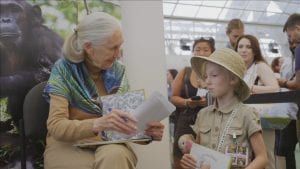
“Each day, every single person has the chance to make an impact through small, thoughtful choices, and when billions of people make the right choices, we start to transform the world,” added Goodall. “Don’t give up; there’s always a way forward.”
The documentary includes appearances by Prince Harry, The Duke of Sussex, and U.S. Secretary of State James Baker, among others.
“The need to protect our planet has never been more urgent, and we’re using Earth Day’s 50th as an opportunity to inspire viewers through the wonders of our planet and its incredible species for viewers around the world,” said Courteney Monroe, president, National Geographic Global Television Networks. “With the Earth Day takeover across all of our networks and platforms, we are able to reach the largest audience possible to celebrate this momentous day and ensure that viewers fall in love with our planet and act to protect it.”
MEET KOBE!
This week’s shelter pet is a loving happy guy named Kobe, a three-year-old male English Bulldog and Pit mix currently waiting at the Smithtown Animal Shelter for a new family. Kobe is an adorable pup who has a face that makes you instantly fall in love with him. He’s a total goofball, and will perform to get your attention. He has lots of energy inside him, and will let it all out with lots of playtime and love to anyone he meets. He gets along great with children, but would prefer to be the only pet in the household.
Kobe unfortunately suffers from a chronic heart condition, so he requires an owner to go the extra mile. He requires daily medication and a yearly checkup with a cardiologist. He also should not be permitted to go on long walks or be out in the hot weather. Despite his heart problems, and a tough start of his life, Kobe is sweet, affectionate and extremely outgoing. He has an amazing attitude through it all.
*Due to the health risk presented by the Covid-19 pandemic, there will be limited public access to the shelter. If you are interested in meeting Kobe please fill out an adoption application online. The Smithtown Animal & Adoption Shelter is located at 410 Middle Country Road, Smithtown. For more information, call 631-360-7575.
COVID-19 has completely changed the way we all live.
But along with worrying about keeping themselves and their families healthy, thousands of small business owners across New York state are losing sleep over how to keep this virus from killing the businesses they have worked so hard to build.
At the same time, lawmakers in Albany are trying to craft a budget in the face of plunging revenues. Sales taxes — much of them generated by small business — brought in a whopping $73.6 billion last year. Our schools, as well as other vital government services, rely on these funds. When a business fails — and too many are on the precipice of failure right now — that sales tax revenue goes, too.
We believe a simple proposal could help restart local business and bolster sales tax revenues, but swift action is required by Gov. Andrew Cuomo (D) and the state legislature.
Small businesses are the backbone of our communities. Everyone wants a thriving downtown where they can shop, eat or go to a movie. The good news is that small businesses have always been engines of innovation and entrepreneurship, and we are seeing that again today as they adapt to the new reality. Local gyms are streaming personal training sessions. Restaurants offer free delivery and online happy hours. Medical practices are expanding their telemedicine capabilities. Car mechanics are making house calls that require no personal contact at all.
Of course, it’s vital that these businesses let potential customers know about their services. That’s the role of advertising in all its myriad forms. But advertising costs money, and the sad truth is that advertising is one of the first things small businesses cut when times are tough.
Put yourself in the shoes of a local restaurateur with a stack of bills and very little money coming in. By the time she finishes paying the most urgent bills — rent, food suppliers, payroll — there’s not much left for advertising. Whatever stimulus money she gets from Washington or Albany will most likely be needed to keep the door open and the lights on. Yet studies show that how well businesses survive a downturn is in large part determined by whether they continue to market and advertise during the hard times.
Fortunately, there is a way for Albany to prime the sales-tax pump to keep revenue flowing to both small businesses and state coffers. Let businesses use some of the money they would have sent to Albany, as sales taxes, to market their new offerings. The formula would be simple: Every dollar a small business spends on advertising (up to some reasonable limit) would be a dollar saved off that business’s sales tax bill.
It would be a win-win-win. Local businesses would be healthier because the increased advertising would jump-start sales. The state would get more sales tax revenue because local businesses would be selling more. And media companies (like ours) would benefit from the additional ad revenue. We’d like to think that we, too, are vital to the character and strength of our communities, not to mention our democracy. Think for a moment of the critical role that journalists have played in getting vital local information out to your community during this unprecedented crisis.
The legislature has a lot on its plate right now, and the temptation will be to bury this idea, or to take the shortsighted view that we can’t afford to do it right now. But right now is when it’s needed. We’ve been impressed with Cuomo’s levelheaded leadership in this crisis, and we call on him to back this innovative yet simple policy.
-— From the New York Press Association
By Irene Ruddock
After spending his childhood in Port Jefferson, artist Dino Rinaldi studied art at the University of South Florida. Upon graduating, he exercised his artistic creativity by pursuing a career in advertising as an illustrator and sales representative. While also creating television commercials, he devoted his spare time studying fine art with renowned artists at the Art Students League of New York City. After twenty-five years of intense study, Rinaldi moved to Setauket. While living on a nature preserve with his wife and daughter, he is happy to devote himself to drawing and painting.
Were you interested in art as a child?
From an early age I was attracted to art. I drew as a teen and some of my best pieces were created on desktops in high school. Boy, I would love to see some of them now! But what impressed me the most was my Italian grandfather’s pastel portrait and landscapes that sadly disappeared over the years. Both of my parents painted, so the talent apparently has been passed down. However, my mother was the driving influence in me pursuing art throughout my life.
Who influenced you while you studied at the Art Students League?
I started at the League where I discovered a world that I had no idea existed. The talent was intimidating but I was welcomed in by all and turned the intimidation into the goal of being the intimidator! I moved from one teacher to another until I discovered Costa Vavagiakis for figure drawing and Nelson Shanks for color theory, learning techniques that nobody had taught me before.
How did you transition from the advertising world to full time painting?
I noticed people were expendable in that business. I needed an escape plan and a second career that I could pursue anywhere in the world. While hitting my most lucrative stride, I quit the ad business at age 42 and went back to the art school full time, intensely learning for eight months.
After living in New York, what drew you back to Long Island?
At 48, I met my wife Hazel and at 49 my daughter Lia was born. Not wanting to raise Lia in the city, I returned to my home town area. Having grown up in Belle Terre and finding it magical, we found the artists’ dream setting, Miller’s Cottage in Frank Melville Memorial Park, East Setauket. I still work in the ad business, but now work in the seclusion of my studio.
How does living in a nature preserve impact your painting?
Although I hadn’t taken a course in landscape, I knew the allure and dreamlike beauty of the surrounding area would have to be painted. I watched instructional videos, while applying my previously acquired skills and set out with my easel. I love being outside so landscape painting was a natural progression. Hearing swans taking off on the pond and an owl that likes to say hello around 11 p.m. always makes me smile and gives me inspiration to paint.
Tell us about painting local scenes.
I have painted and drawn the Belle Terre Gates in Port Jefferson many times, loving every stroke and remembering back to my childhood. Painting the cove at the end of Cliff Road also holds some of my fondest memories.
You are also known for your paintings of animals. Do you have many commissions for those?
I have a pretty steady clientele who commission me to draw their horses and dogs. The number of people requesting pencil portraits of a family member is gaining momentum. Relatives, famous musicians, artists, and celebrities are among the most requested.
How would you describe your style of painting?
I feel I have yet to hit my stride on one subject are or even one style, but continue to grow and hone my skills with the goal of creating something each painting better than the last one.
You exhibit many beautiful still life paintings in a box. How did this genre come about?
While living in SoHo, I took a walk to Houston Street where people were selling goods. I suddenly saw an old box with a wonderful patina. I was told it was from the 1800’s and “very rare.” After much haggling, we settled on $10. I told the man I was going to paint a still life in the box and paint so many that I would turn the $10 purchase to $10,000. I ended up selling the first one for at the Art Students League for $600. Only $9,400 to go! Since then, I have painted close to 100 objects in the box and the amount must be close to $100,000 in sales.
Since you don’t often enter shows or work with a gallery, how do you seek out opportunities to sell your work or cultivate a collector base?
When it comes to selling my work I found a worldwide audience through Facebook, Instagram, and Saatchi Art online. I love interacting with my over 4,500 friends from around the globe on Facebook: Dino Rinaldi Art. I also have lawn exhibits outside the cottage in the park where my daughter joins me.
Is your daughter following in your family’s footsteps?
My daughter has begun taking her art seriously, often accompanying me with her pink easel to paint various spots in this stunning park. She has already sold 6 pieces! A fine start indeed!
What qualities does a painting to have to satisfy your standards?
Before setting out to paint, I ask myself “Would it be something I want on my walls?” Another criteria is that it must be a great drawing or painting. If the work fails to meet these two criteria, I put it aside and re-use the canvas. I am my toughest critic.
What advice would you give to your younger self?
If I had a chance I probably tell a younger Dino to focus more on art at an earlier age, save your money for a rainy day so you could escape the city earlier for the peaceful life at Setauket, and to keep my head down longer on my chip shots!
Is there one habit that helps or hinders your creativity?
Determination! I paint and draw as many as a hundred hours a week, working late into the night while listening to music. I learned that when you can do something you love, it is no longer a job but a passion.
What role does art have in society?
I have used my art toward helping charities whenever possible. I began a friendship with Petra Nemcova, a model who lost her fiancé in the tsunami almost a decade ago. I was so moved, I set up an art show at Guava Studios and was able to raise $13,000 toward building a school in Thailand.
That is a wonderful achievement! I have heard that you also give to other charities as well.
I have donated to horse rescues and other animal rescues. I think it is a natural progression to want to help people even as I sometimes struggle to make money; rarely do I question if it is the right move.
What are your future aspirations as an artist?
My goal has been to always to enjoy my life in the fullest manner possible while also being able to spend more time with my wife and daughter. I want to sell enough art to pay the bills and keep me in cadmium red! By continuing to study the old masters, I will someday reach my goal of fame and fortune.
